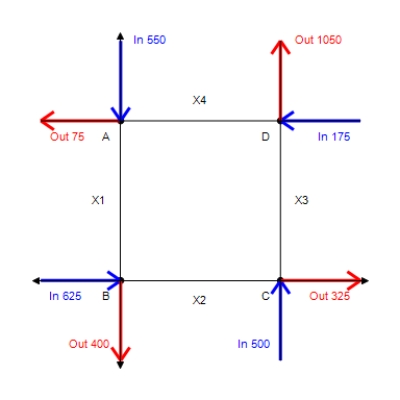Multiple Choice
In the analysis of traffic flow, a certain city estimates the following situation for the "square" of its downtown district. In the following figure, the arrows indicate the flow of traffic. If x1 represents the number of cars traveling between intersections A and B, x2 represents the number of cars traveling between B and C, x3 the number between C and D, and x4 the number between D and A, we can formulate equations based on the principle that the number of vehicles entering an intersection equals the number leaving it. That is, for intersection A we obtain  Formulate equations for the traffic at B, C, and D. Solve the system of these four equations.
Formulate equations for the traffic at B, C, and D. Solve the system of these four equations.

A) 
B) , 
C) 
D) 
E) 
Correct Answer:

Verified
Correct Answer:
Verified
Q1: Use the following matrices to perform the
Q3: If <img src="https://d2lvgg3v3hfg70.cloudfront.net/TB1243/.jpg" alt="If and
Q4: What is element <img src="https://d2lvgg3v3hfg70.cloudfront.net/TB1243/.jpg" alt="What is
Q5: The given matrix is an augmented matrix
Q6: Set up the system of equations and
Q7: A clothing manufacturer has factories in Atlanta,
Q8: The sales department of an auto dealership
Q9: Use the matrices below. Perform the indicated
Q10: When a firm buys another company, the
Q11: The following technology matrix describes the relationship